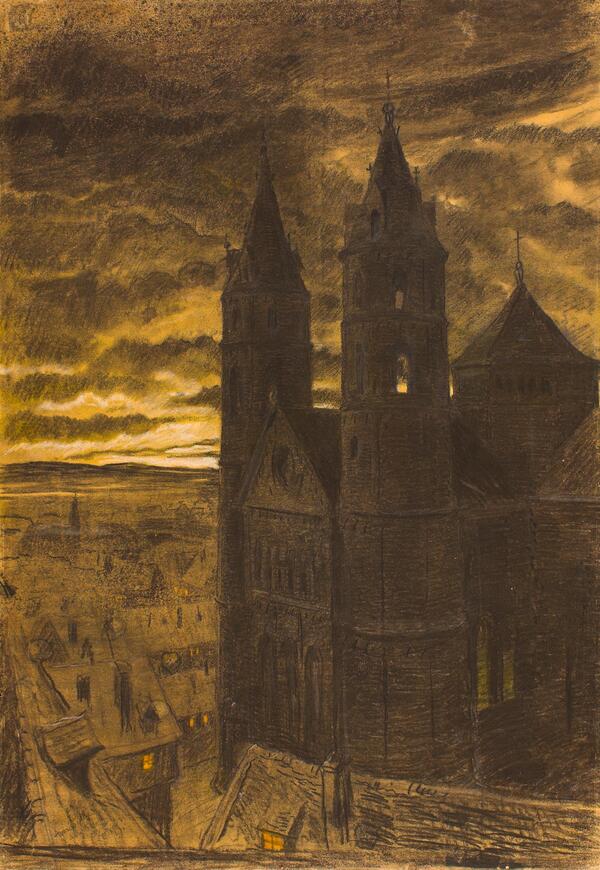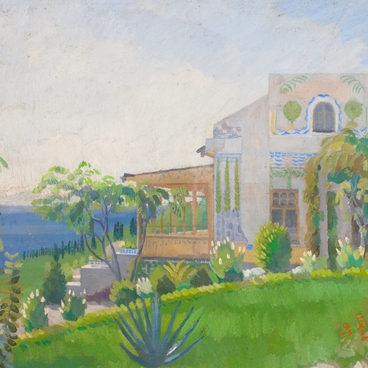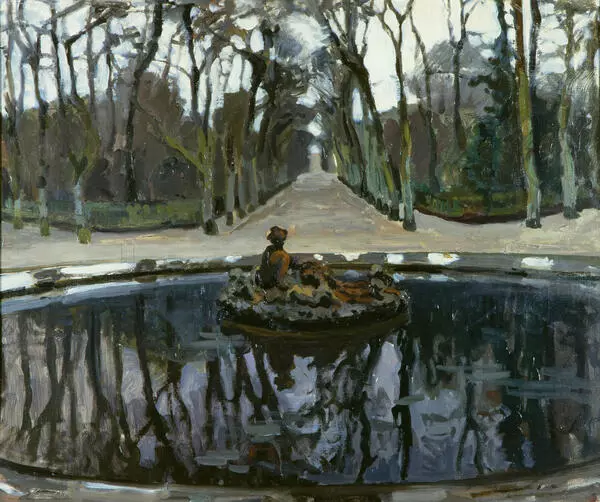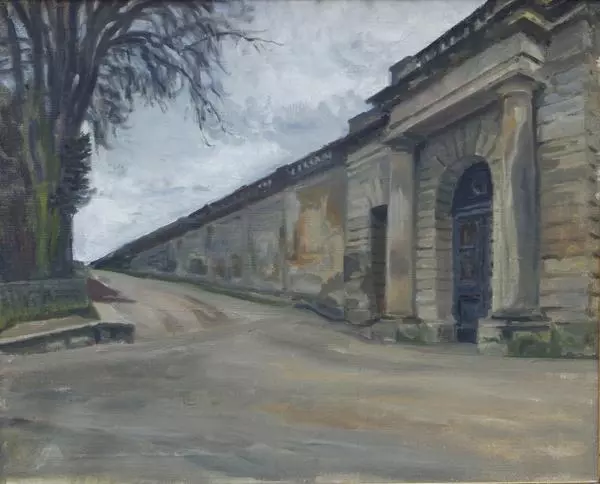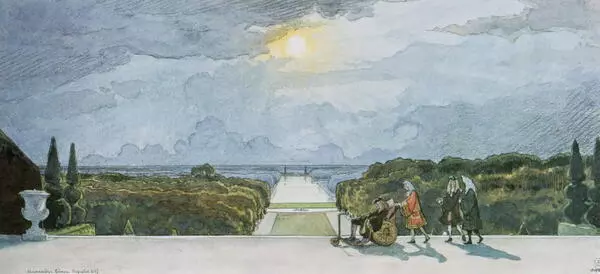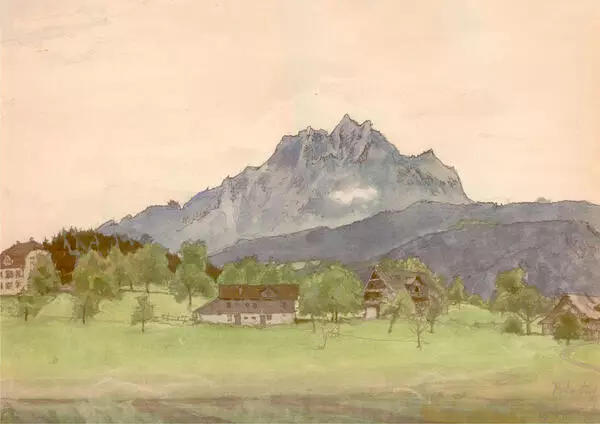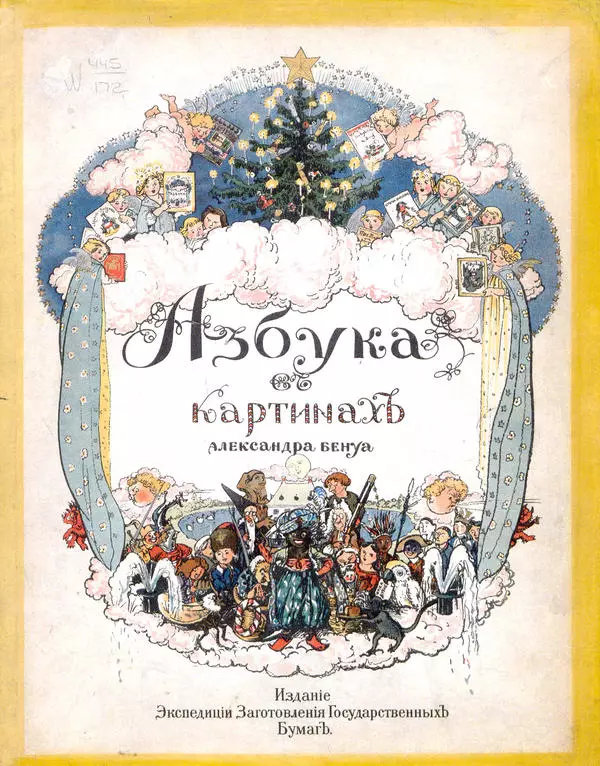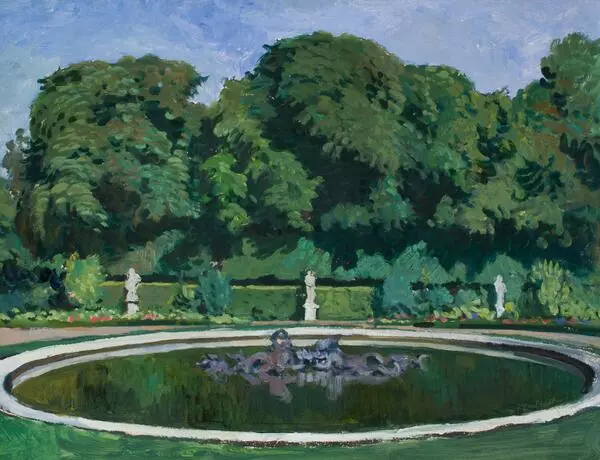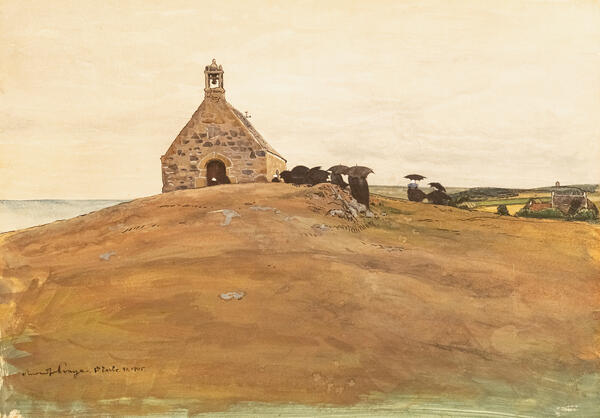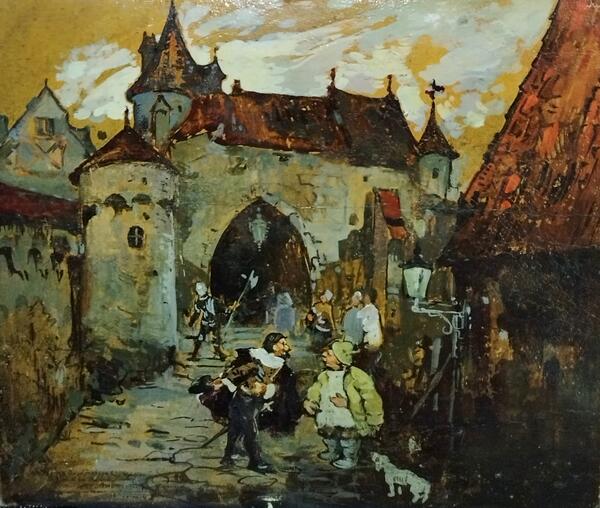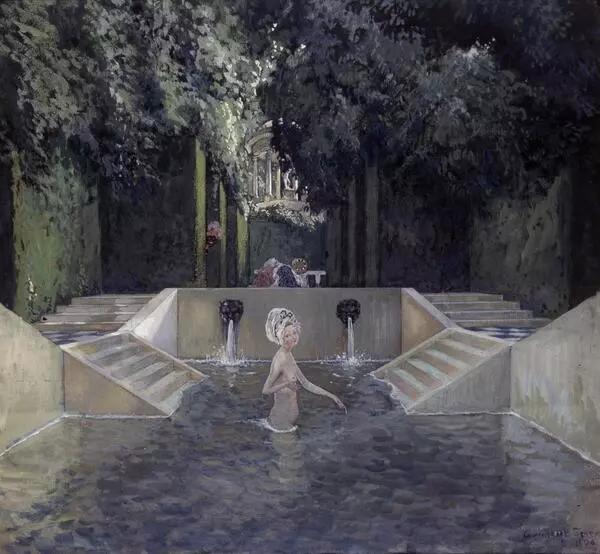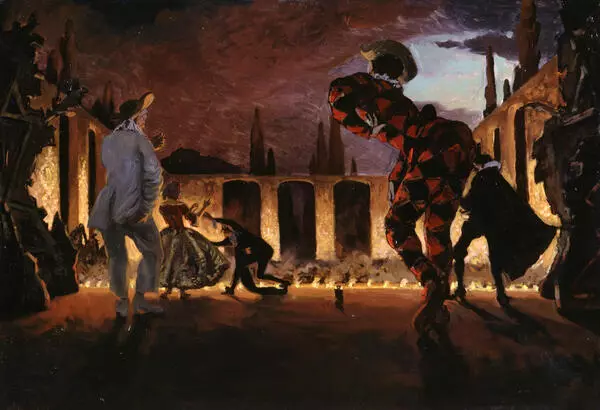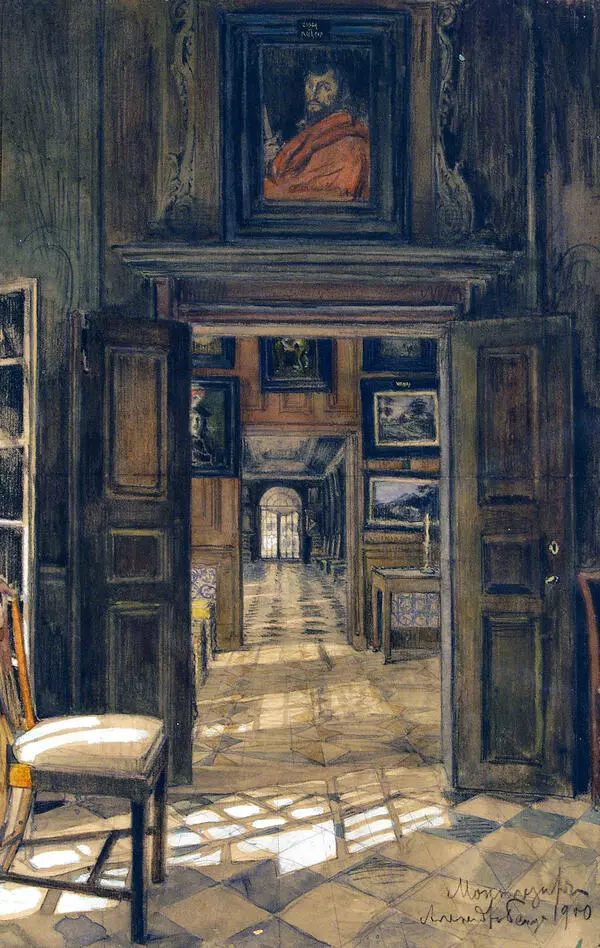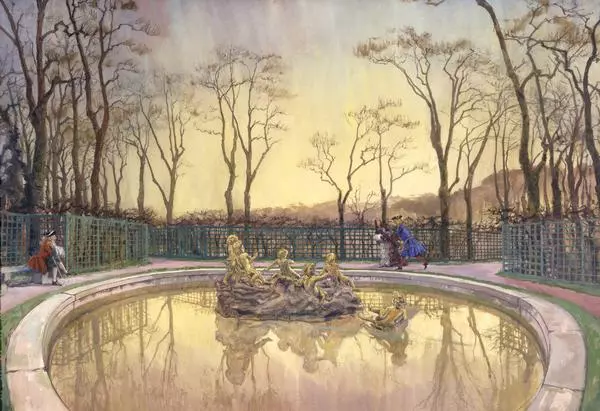Alexander Benois is an artist, art historian, art and theater critic, scene designer, decorator, central figure at the ‘World of art’ association and the ideological inspirer of Sergei Dyaghilev’s “Russian seasons”.
The future artist was born in Saint Petersburg in the family of Nicholas Benois who was the architect of the highest court. The atmosphere at home was creative and encouraged the boy to study art. For some period of time, Alexander Benoit studied at the Imperial Academy of Arts, but did not complete his education: he decided that practice is the best way to become an artist. Benoit was exceptional hard-working person: it took him just one day to have his sketch album full with multiple drawings, to work on a painting in his studio, to pay a visit to the theater to study through the details of scenery sketches and costumes, to go through the directing process and even to work on the roles with actors. In addition, Benois always had time to prepare an article for a magazine or newspaper and write several informative letters, which always contained some interesting thoughts about art.
The historical theme prevailed in Benoit’s work. He wrote: ‘A lot of things in the past seem to me well familiar, as if I’d known that for a long time’. The earliest of Benoit’s retrospective artworks are related to his work at Versailles. In 1896, the artist went to France for the first time, and this trip had great impact on his artistic career. In 1897-1898, he painted a series of small paintings in watercolors and gouache, which had a common theme — ‘Last promenades of Louis XIV’. These artworks made the artist famous.
During the same period, he completed his ‘Medieval Cathedral’ artwork. He used a mixed technique here: pastel, charcoal, pencil. In 1898, Benoit visited Rouen, the historical capital of Normandy, but researchers cannot determine which exactly cathedral is depicted in the Benois’s drawing. In this mysterious and disturbing landscape drawing Alexandre Benoit, as a “retrospective dreamer” showed the beauty and grandeur of the Gothic style, the beauty and grandeur of the spirit that rises above the ordinariness. The paper is visible through the pastels which gives the effect of a kind of “light from the inside”. During these years, the pastel technique in Russia actually experienced a rebirth and became a favorite technique of the members of the “World of Art” association.
The future artist was born in Saint Petersburg in the family of Nicholas Benois who was the architect of the highest court. The atmosphere at home was creative and encouraged the boy to study art. For some period of time, Alexander Benoit studied at the Imperial Academy of Arts, but did not complete his education: he decided that practice is the best way to become an artist. Benoit was exceptional hard-working person: it took him just one day to have his sketch album full with multiple drawings, to work on a painting in his studio, to pay a visit to the theater to study through the details of scenery sketches and costumes, to go through the directing process and even to work on the roles with actors. In addition, Benois always had time to prepare an article for a magazine or newspaper and write several informative letters, which always contained some interesting thoughts about art.
The historical theme prevailed in Benoit’s work. He wrote: ‘A lot of things in the past seem to me well familiar, as if I’d known that for a long time’. The earliest of Benoit’s retrospective artworks are related to his work at Versailles. In 1896, the artist went to France for the first time, and this trip had great impact on his artistic career. In 1897-1898, he painted a series of small paintings in watercolors and gouache, which had a common theme — ‘Last promenades of Louis XIV’. These artworks made the artist famous.
During the same period, he completed his ‘Medieval Cathedral’ artwork. He used a mixed technique here: pastel, charcoal, pencil. In 1898, Benoit visited Rouen, the historical capital of Normandy, but researchers cannot determine which exactly cathedral is depicted in the Benois’s drawing. In this mysterious and disturbing landscape drawing Alexandre Benoit, as a “retrospective dreamer” showed the beauty and grandeur of the Gothic style, the beauty and grandeur of the spirit that rises above the ordinariness. The paper is visible through the pastels which gives the effect of a kind of “light from the inside”. During these years, the pastel technique in Russia actually experienced a rebirth and became a favorite technique of the members of the “World of Art” association.

